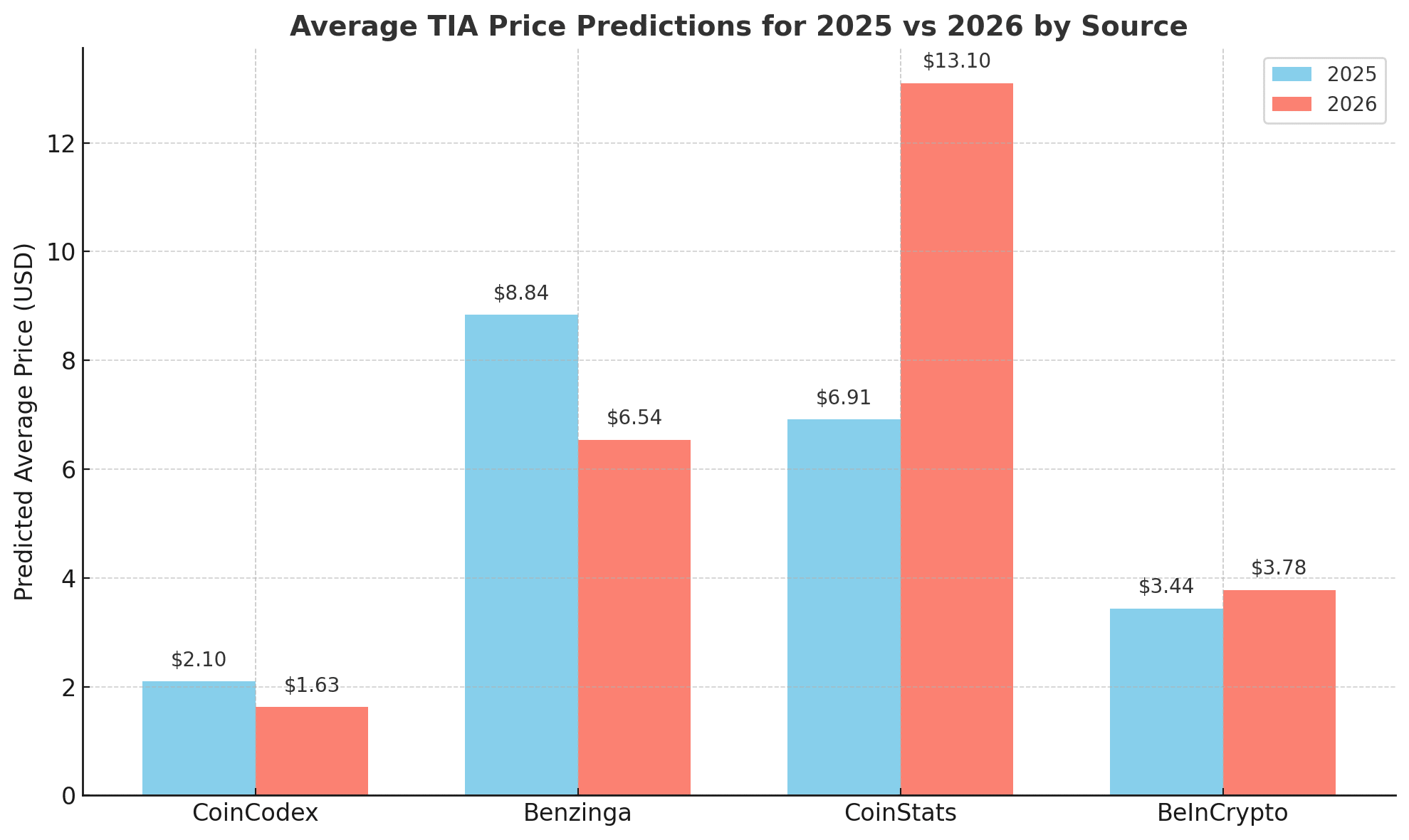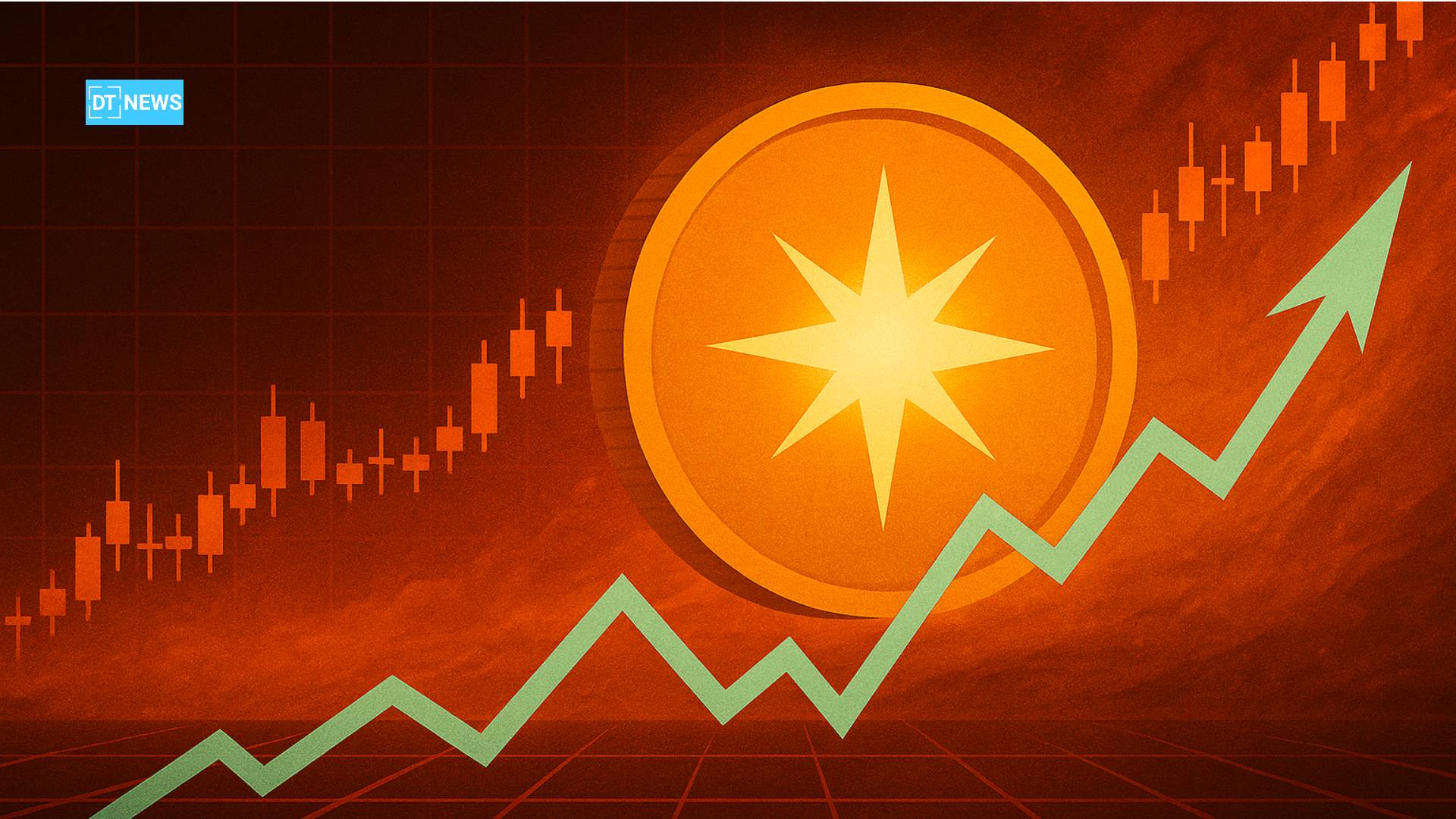Celestia (TIA) has emerged as a leader in modular blockchain architecture, and traders are watching it closely. With increasing attention on Layer-1 scalability and rollup-centric designs, TIA could be at the heart of the next innovation wave.
- Current TIA Price and Market Snapshot
- TIA Price Prediction for 2025
- TIA Price Forecast for 2026
- Forecast Summary Table
- Expert Commentary: Can TIA Deliver?
- On-Chain and Ecosystem Growth
- Modular Chains Are Gaining Steam, And Celestia Is Leading
- From Ethereum’s Shadow to Center Stage? Celestia’s 2026 Potential
- Conclusion: The Infrastructure Bet of the Future?
- FAQs
- Glossary
But can Celestia’s price reflect that growth in 2025 and 2026? Let’s break down the data, predictions, and on-chain momentum to assess its potential.
Current TIA Price and Market Snapshot
| Metric | Value |
|---|---|
| Current TIA Price | $2.54 |
| 24h Price Change | -0.13% |
| Market Cap | $1.65 Billion |
| 24h Trading Volume | $280.6 Million |
| Circulating Supply | 645.89 Million TIA |
| All-Time High | $20.91 (Feb 2024) |
| All-Time Low | $2.03 (Oct 2023) |
TIA Price Prediction for 2025
TIA Price forecasts for 2025 vary widely, depending on network adoption, rollup integration, and overall market sentiment.
Bearish Outlook:
CoinCodex projects a potential decline to $1.39 by mid-2025. Citing weak technical indicators and low short-term trading volumes, their analysis sees TIA struggling if broader market headwinds persist.
Moderate Scenario:
BeInCrypto offers a balanced view with a range of $2.28 to $5.58, averaging $3.44. This aligns with expectations of gradual ecosystem growth and higher Layer-2 activity.
Bullish Forecasts:
CoinStats estimates a possible TIA price between $4.53 and $9.30, emphasizing long-term value in Celestia’s modular design.
Benzinga offers one of the most bullish takes, projecting highs of $15.66, assuming TIA leads the modular chain narrative and gains more developer traction.

TIA Price Forecast for 2026
As modular blockchain architecture becomes better understood and adopted, many see 2026 as a potential breakout year for TIA.
Conservative Estimates:
CoinCodex remains cautious, with a TIA price range between $0.77 and $3.76, reflecting possible dilution or market slowdown if adoption lags.
Steady Growth:
BeInCrypto suggests a range of $2.50 to $6.13, with a mid-range forecast of $3.78, not spectacular, but consistent with slow-burn infrastructure tokens.
Optimistic View:
Benzinga expects TIA to trade between $3.82 and $9.18, averaging $6.54, driven by Layer-2 migration and developer demand.
CoinStats proposes a maximum of $25.00, banking on Celestia becoming a default data availability layer for Ethereum rollups.
Forecast Summary Table
| Year | Source | Low | Average | High |
|---|---|---|---|---|
| 2025 | CoinCodex | $1.39 | $2.10 | $3.76 |
| 2025 | Benzinga | $3.32 | $8.84 | $15.66 |
| 2025 | CoinStats | $4.53 | $6.91 | $9.30 |
| 2025 | BeInCrypto | $2.28 | $3.44 | $5.58 |
| 2026 | CoinCodex | $0.77 | $1.63 | $3.76 |
| 2026 | Benzinga | $3.82 | $6.54 | $9.18 |
| 2026 | CoinStats | $1.20 | $13.10 | $25.00 |
| 2026 | BeInCrypto | $2.50 | $3.78 | $6.13 |
Expert Commentary: Can TIA Deliver?
Celestia’s value proposition lies in modular blockchain design, separating consensus and data availability from execution. This model appeals to developers who want scalable and flexible chains without building entire Layer-1s from scratch.
“Celestia is like AWS for blockchains. You don’t build your entire chain — you deploy your app on Celestia’s shared infrastructure,” said Lex Folio, a Web3 engineer.
Institutional interest remains low but is growing. If Ethereum rollups migrate to Celestia for data availability, the token’s value could surge. Yet, challenges remain, particularly around token economics, validator incentives, and user awareness.
On-Chain and Ecosystem Growth
Recent developments bolstering TIA’s 2025–2026 outlook include:
Increased developer grants: The Celestia Foundation announced over $3M in ecosystem funding for new modular dApps.
Ecosystem expansion: Rollkit and Sovereign chains built on Celestia have seen rising testnet activity.
Interoperability momentum: Cross-chain integrations with Cosmos, Ethereum, and Avalanche.
These factors could accelerate TIA’s adoption and push TIA price predictions into the upper forecast range.

Modular Chains Are Gaining Steam, And Celestia Is Leading
While Ethereum struggles with Layer-2 complexity and monolithic Layer-1 chains face scalability ceilings, modular blockchains like Celestia are quietly building the future. By unbundling execution from consensus and data availability, Celestia allows developers to launch efficient, app-specific chains that don’t suffer from congestion or high fees.
This shift isn’t theoretical anymore; testnet adoption of modular solutions like Rollkit, built on Celestia, has jumped 60% in Q2 2025. If this momentum carries into mainnet adoption, TIA could emerge as the go-to infrastructure layer for next-gen blockchains.
From Ethereum’s Shadow to Center Stage? Celestia’s 2026 Potential
Celestia may currently fly under the radar compared to giants like Solana and Avalanche, but its architectural advantage could change that in 2026. If Ethereum rollups adopt Celestia as a dedicated data availability layer, it could trigger a powerful TIA price catalyst.
With Ethereum gas fees still unpredictable and DA layers gaining institutional attention, analysts suggest a scenario where Celestia plays a “backbone” role, like AWS does for web apps. This would dramatically expand demand for TIA tokens, potentially justifying bullish forecasts toward $15 or even $25 by late 2026.
Conclusion: The Infrastructure Bet of the Future?
Celestia is not just another smart contract platform. Its infrastructure is foundational, flexible, and still misunderstood. Its modular architecture solves real problems in blockchain scalability, and if rollups become the dominant scaling model, TIA price could become the fuel that powers it all.
Predictions for 2025 and 2026 reflect the dual nature of innovation: high upside, high uncertainty. Conservative estimates hover around $2–$5, while bullish forecasts push past $15 or even $25 by 2026.
FAQs
What is Celestia (TIA)?
Celestia is a modular blockchain network that provides consensus and data availability layers for other chains to build upon.
Why is TIA considered a Layer-1 token?
TIA secures Celestia’s consensus and data availability layers, making it fundamental to modular chain functionality.
Can TIA price reach $25 by 2026?
It’s possible under a high-adoption scenario, but such predictions depend on market cycles, dev activity, and broader Layer-2 trends.
Glossary
Modular Blockchain: A blockchain that separates execution, consensus, and data availability layers.
Data Availability Layer: Ensures that blockchain data is accessible for verification.
Rollups: A Layer-2 scaling solution that processes transactions off-chain before posting them to Layer-1.
Layer-1: The base protocol blockchain, like Ethereum or Celestia.
Sources and References
Disclaimer: This article is for informational purposes only and does not constitute financial advice. Always conduct your own research before making investment decisions.



















































































































